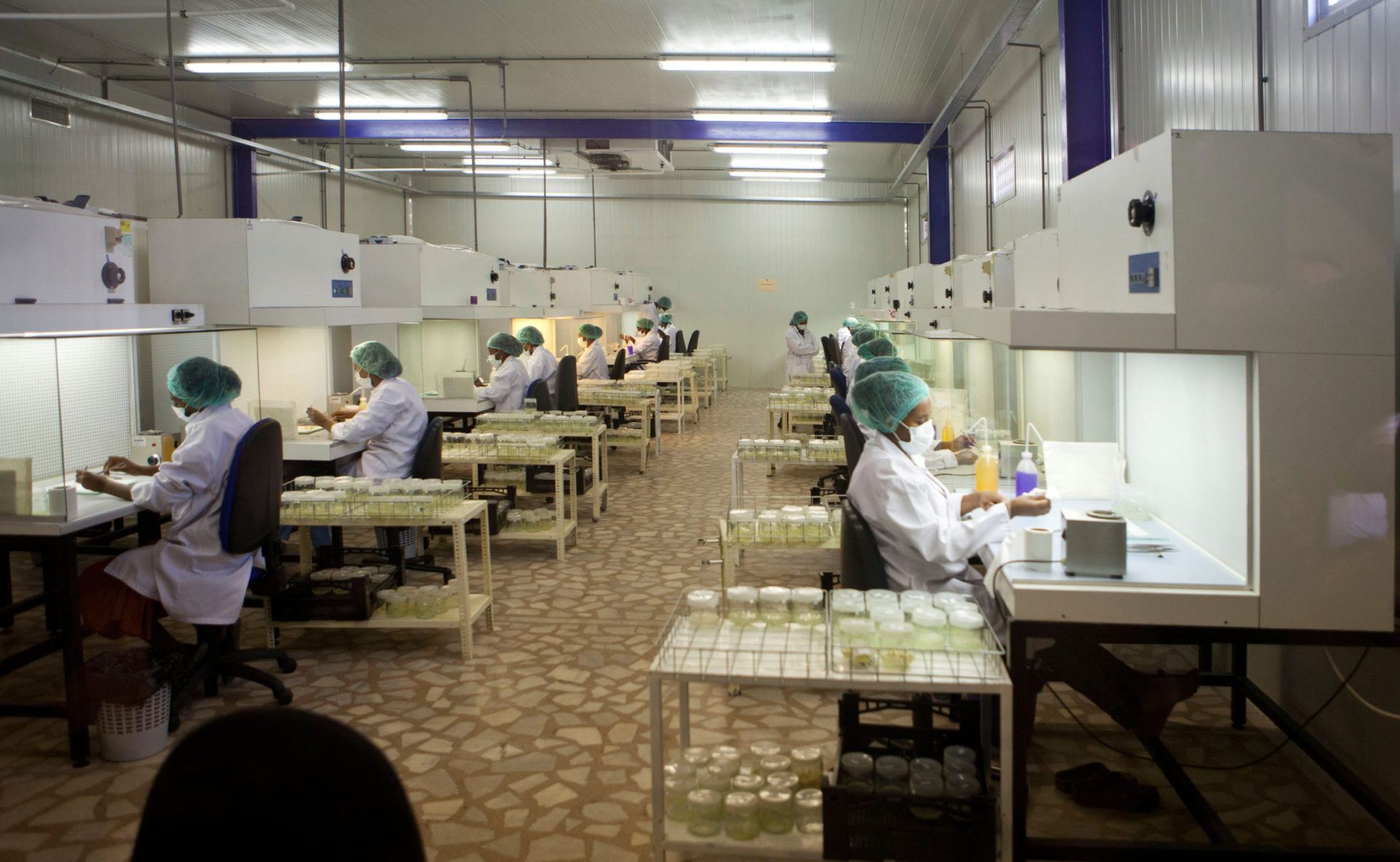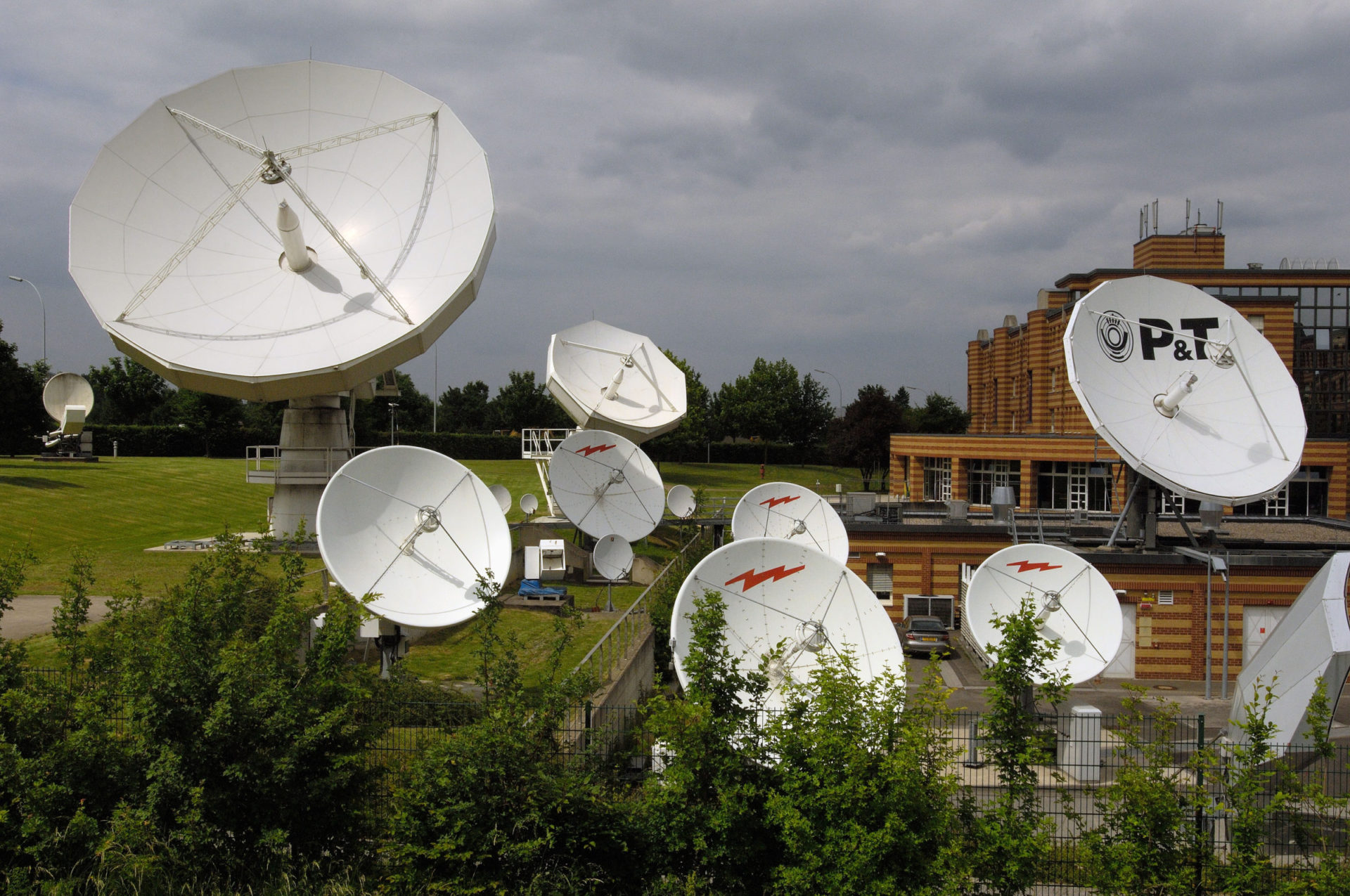

Last year, Congress passed the CHIPS and Science Act, which, besides shoring up the American semiconductor industry, also significantly increased federal spending on scientific research. Both the Department of Energy and the National Science Foundation came away with substantial boosts. The “and Science” part of the bill comes from the Endless Frontier Act, a bipartisan proposal from early 2020 to boost public investment in research and development. Congress has also increased science funding through the ordinary appropriations process, including large bumps for another major research agency, the National Institutes of Health.
Preceding these legislative actions was a years-long — and still ongoing — debate on the Hill over how to ensure that the United States maintains its competitive advantage in science and innovation, especially against a rising China. This debate, like most science policy debates, was framed almost exclusively in terms of funding. How much money should we be spending on research? Who should spend it — the private or the public sector? If the public, then which government agency? Which constituency should get it — “basic” science or “applied” research and development? Each always lobbies for its own preferred outcome, while politicians bicker over whether we’re spending too much or too little.
Funding is of course necessary for science. Modern science is a large-scale and expensive endeavor. But funding is not sufficient for scientific progress. The scientific enterprise suffers from systemic problems that won’t be solved, and could even be made worse, by simply throwing more money at researchers. These problems include the failure to replicate key experimental findings (the so-called “replication crisis”), the prevalence of shoddy research practices, misaligned incentives, increasing bureaucratization, and the slowing of scientific progress.
In response to these problems, a number of key science agencies, including the National Science Foundation and the National Institutes of Health, have launched programs to reform funding mechanisms, incentivize breakthrough discoveries, reduce the administrative burden on researchers, and link research to real-world outcomes. These are promising developments for improving federal science as well as the larger research enterprise.
But reforms aimed at spurring scientific progress will be shots in the dark without a clear conception of what scientific progress is. Unless we are explicit about what we mean by scientific progress, we will fail to see the tradeoffs between different conceptions of it and the particular kinds of reform they each require. Worse, the wrong kind of reform may even achieve the opposite of what we intend.
There are at least three different models for thinking about scientific progress that inform contemporary debates, mostly implicitly. All three are rooted in well-established philosophical traditions, but they differ significantly in how they understand science.

The first is what we might call the accumulationist model of scientific progress. According to this model, science progresses through the steady accumulation of data, facts, or information. The guiding metaphor here is the container: scientists go out and find bits of knowledge and add them to the container. Scientific progress is therefore a cumulative process, linear and gradual.
Importantly, this process of accumulation is potentially finite. Scientists could in principle find all the bits of knowledge and discover all there is to know about the world. They can fill up the container. At the very least, scientists could, to mix metaphors a bit, pick all the low-hanging fruit — the bits of knowledge that are most easily accessible — leaving only incremental improvements.
This view is an important part of the “folk” understanding of science, and it remains influential in policy discussions, despite having been subjected to severe criticism by philosophers, sociologists, and historians over the last century.
The accumulationist model may be contrasted with one that we can call the Kuhnian model, after historian-philosopher Thomas Kuhn, who famously critiqued the accumulationist view.

According to this account, progress is not linear and gradual; it is punctuated by moments of profound conceptual change and innovation. There are periods of relative calm — what Kuhn termed “normal” science — during which progress looks a lot like it does to the accumulationist. But these periods are interrupted by crises, when prevailing theories break down. Rivals emerge, challenge the consensus, ultimately overthrow a prevailing paradigm, and take its place, as when relativistic and quantum physics dethroned classical physics. These are the scientific revolutions that Kuhn called “paradigm shifts.”
In the Kuhnian model, what counts as a meaningful scientific fact or problem depends on the paradigm. Scientists don’t just go out and collect facts; they use theories to interpret the world and manipulate it. So while a given paradigm might exhaust itself — scientists could “fill up the container” — that doesn’t necessarily mean that scientific progress ends. On the contrary, when a new paradigm emerges, it poses its own new questions, problems, and opportunities. Scientists set aside the old container and get a new one — or, perhaps more accurately, they use the materials from the old container to build a new one entirely.
The contrast between the first two models of scientific progress may be illustrated by a historical anecdote. The famed theoretical physicist Max Planck once recalled that as a university student in the 1870s he asked his teacher about the prospect of a career in physics. The older physicist told Planck that almost all of the major problems had already been solved, leaving only some “specks of dust and bubbles” to test and incorporate. From an accumulationist point of view, the advice was in fact fairly sound. The prevailing classical paradigm in physics was nearly complete in the late nineteenth century — many of the major problems had been solved within it, leaving little of great significance for young physicists to do.
What the older physicist didn’t anticipate was that physics was on the cusp of one of the greatest scientific revolutions since Newton, one in which Planck himself would play a decisive role. So what appeared in the classical paradigm as relatively minor problems to be solved through the extension of existing theory would turn out in retrospect to be fundamental problems requiring deep conceptual innovation of just the kind provided by the emerging quantum theory — which Planck initiated in the late 1800s — and by the relativity theories later developed by Einstein.
The older physicist can hardly be blamed for not anticipating quantum physics. But from a Kuhnian perspective, he could have anticipated that there would be more theoretical revolutions in the future, even if he could not say exactly what or when. His error was to assume that the end of classical physics was the end of physics as such. Fortunately for us, Planck did not reach the same conclusion.
The third and last model is best understood in contrast to the Kuhnian one. For the Kuhnian model, what propels science forward is problems or crises that are internal to science. Thus, what produced the crisis in classical physics, to which scientists like Planck and Einstein provided solutions, were highly technical problems of interest only to specialists.

According to the third model, however, science progresses not by extending existing scientific paradigms, nor by resolving problems or crises internal to science. Instead, science progresses by grappling with problems posed to it from outside by social, political, and economic needs. We recognize scientific progress not by advances or innovations in our theoretical knowledge but by whether and to what extent our theories help us solve practical problems. Does science generate technological breakthroughs, contribute to economic growth, or help us solve pressing social and political problems?
We might call this the Baconian model. Science is said to be flourishing only insofar as it bears fruit that can aid in the “relief of man’s estate,” as Francis Bacon famously put it in the seventeenth century.
Of course, the first two models of scientific progress don’t reject the idea that science has practical benefits. No one would deny that science contributes to technological innovation and economic growth, or that it helps us solve social and political problems. What is distinctive about the third model is that it takes these contributions to be essential aspects of scientific progress, while the other two consider them byproducts, however important. A science that is “barren of works,” to use Bacon’s metaphor, is immature and sterile, no matter how theoretically sophisticated it may be: “it can talk, but it cannot generate.”
Depending on which model we accept, we are likely to disagree about how to diagnose the problem of scientific progress — or whether there even is a problem.
If we take scientific progress to be a steady process of accumulation, then the question is: How effectively are scientists accumulating knowledge and diffusing it? The problem comes down to one of efficiency. Is knowledge accumulation slowing down? If so, then that could signal inefficiencies in the management of science or in the dissemination of knowledge. Or it might indicate that the process of accumulation is simply reaching its natural end, the container is close to full.
If we see scientific progress along Kuhnian lines, then the question is whether a given scientific paradigm remains a source of progress. Do existing theories continue to generate novel predictions, discoveries, or solutions? Or has the paradigm become moribund, capable of only ad hoc solutions to scientific problems? This is what philosopher of science Imre Lakatos called a “degenerate” research program. It is a problem not of inefficiency but of too little conceptual innovation.
Lastly, if we see scientific progress in Baconian terms, then the question is whether science continues to serve as a source of practical utility. If we see fewer breakthrough innovations in technology and medicine, or sluggish productivity, then these may be signs that science is in trouble, regardless of how efficiently knowledge is being accumulated or how successful a given paradigm is according to science’s own internal standards. The problem may be that science has become too inwardly focused, too disconnected from economic, social, or political needs.
The three models are not completely at odds. For instance, they all recognize that science has practical benefits. And they all see scientific progress as a cumulative and continuous process, at least in the broad sense that science builds on itself. We don’t get Einstein without Newton. Even the Kuhnian model concedes that during “normal science” progress takes place in a linear and gradual way, with scientists filling out the prevailing paradigm.
The difference is that in the Kuhnian model normal science gets interrupted by moments of crisis. Prospectively, scientific progress is discontinuous, even if, retrospectively, we can see how science builds on itself. The Baconian model, for its part, can accommodate the Kuhnian idea that science moves forward through discontinuous paradigm shifts. But it differs in that the problems that drive these shifts are not internal to science but rather come from external societal forces.
Yet whatever their similarities, these models have fundamentally divergent conceptions of scientific flourishing. For this reason, there inevitably will be points of disagreement when it comes to proposals for reform. And these reforms, in turn, will often involve tradeoffs. We will evaluate these tradeoffs differently depending on which conception of progress we endorse.
If we follow the first model, our aim should be to ensure the efficient accumulation and diffusion of knowledge, for example by making science transparent, open, and streamlined. Reforms might aim to reduce the administrative burden on researchers. As it stands, researchers on average spend nearly half their time on paperwork rather than actively engaging in research. Streamlining federal rules and regulations or standardizing grant application processes could increase scientific efficiency by freeing scientists up to focus on their core competencies, rather than wasting time on clerical work.
Of course, combating the bureaucratization of science could also serve the goal of increasing scientific autonomy, giving scientists more leeway to focus on the work they set out to do. To this extent, the accumulationist model and the Kuhnian model have common cause. But their policy implications diverge in other respects.
For instance, it is essential to the Kuhnian model that scientific change is discontinuous, with new paradigms challenging and overthrowing what came before. There is no way to know in advance whether or when a new paradigm will emerge or what it will look like. So for science to flourish, it needs the freedom to resolve its own problems and manage its own crises in its own way. This means policing the boundaries of established knowledge while at the same time making space for the kind of creativity and risk-taking that can lead to breakthrough discoveries.
In practice, reforms might aim to give individual scientists or scientific institutions more flexibility in how they spend research funds or what projects they decide to pursue and how. Or reforms could try to ensure that scientific institutions have the right incentives — or are cultivating the right habits of mind — for young researchers to challenge conventional wisdom and propose creative new alternatives. Such autonomy may be worth short-term tradeoffs in efficiency — for example, more dead-end projects, more high-risk projects — if it means more Einsteins in the future.
In stark contrast, if we measure scientific progress by science’s practical outputs, then too much scientific autonomy may be a liability. Our goal should instead be to link science more explicitly to societal needs. Thus, reforms might aim to make science more accountable to outside forces and stakeholders — funders, the government, the market, the public — since it is they who are in touch with society’s most pressing needs. Such accountability is worth the price of scientific autonomy, so long as it produces the practical benefits society demands.
So which model is the right one? The short — and perhaps unsatisfying — answer is: it depends. Each model captures important features of the modern scientific enterprise and the demands society places upon it.
The accumulationist model is right that scientific progress often takes place through the steady accumulation of knowledge. But it misses the historical fact that science does experience moments of profound disequilibrium, although these moments occur at different times and last for different periods of time in different scientific fields.
The Kuhnian model rightly emphasizes these points of discontinuity — and the fact that they are by definition unpredictable and open-ended.
Yet it is also undeniable that modern science is and must be judged by its “fruits.” Since Bacon’s time, science has indeed become an unrivaled source of practical power, from electrification and computing to modern medicine and weapons of mass destruction. And this raises a host of questions about the responsibilities scientists have to the wider public as well as about the public’s interests in grappling with the practical benefits, or harms, of modern science.
Moreover, since World War Two the public has been underwriting large-scale scientific research and development through vast public expenditures. Implicit in this contract is the idea that these expenditures provide some kind of public benefit. And so it is inevitable, and in a democracy also desirable, that citizens and their elected representatives demand to receive something in return — whether that something is practically beneficial or just adds to our common stock of knowledge. Hence “external” evaluations of scientific progress, crude and inadequate though they often are, are unavoidable. In this sense, the Baconian model provides a necessary corrective to the Kuhnian model’s emphasis on scientific autonomy.
Which model is the right one will depend on the particular scientific context and goals we want to advance. Some of these goals are simply irreconcilable — we cannot maximize researcher autonomy while simultaneously increasing accountability and oversight. If we universalize any one of these models, we will wind up with one-size-fits-all reforms that fail to account for potential tradeoffs and downsides.
Some fields are overburdened with bureaucratic red tape, hindering progress. In these instances, improving efficiency is an important goal, perhaps even an overriding one. For example, we learned from Operation Warp Speed during the Covid pandemic that vaccine development can be accelerated by allowing phases of the clinical trial process to start sooner or take place concurrently. In other instances, such as fields that haven’t seen fundamental theoretical innovations in decades, more disruptive breakthroughs may be a better goal than more efficiency.
At the same time, some fields require more oversight than others, by virtue of the risks they pose. Consider the horrors of the Tuskegee syphilis study or the injustice of the treatment of Henrietta Lacks. (The fact that the Tuskegee experiment was conducted by the U.S. Public Health Service should, however, serve as a cautionary reminder that the federal government is not always a beneficent overseer of scientific research.) Most people would agree that we need to have clear regulatory standards in fields with human subjects. Or consider controversial fields, such as gain-of-function research on potential pandemic pathogens, that pose biosafety and biosecurity risks. In these instances, we may be willing to sacrifice efficiency and autonomy for the sake of safety and security, even if we disagree about exactly how to strike that balance.
Similarly, some areas of science, such as social psychology, nutritional science, and biomedical research, appear to have more problems with replication and the misuses of statistical methods than others. More transparency and oversight might be needed to encourage better research practices or penalize bad actors. But though these reforms may help ensure higher quality, they will necessarily also decrease scientific autonomy; they may also decrease efficiency by raising the cost of complying with stricter standards.
There may be other reasons to make scientific research more responsive to the public. In areas of research that have direct impacts on society, scientific progress may require the expertise of a variety of outside stakeholders, including lay citizens, in framing research questions, evaluating evidence, or translating knowledge into action. This is a lesson we learned — or should have learned — from Covid-19, when the problems facing society required mobilizing a dizzying array of scientific fields and methodologies and grappling with problems that went well beyond any single area of research and implicated everyone, expert and non-expert alike.
Or consider those sciences that have practical objectives. Biomedical research, for instance, aims not only to advance our understanding but also to improve the practice of medicine and, ultimately, human health. A focus on real-world impacts makes a lot of sense here. If, at the end of the day, there is no obvious correlation between theoretical progress and better health outcomes, the public might reasonably ask whether biomedical research is really worth the vast sums of money it demands.
Policy discussions naturally tend to focus on “policy-relevant” sciences, such as epidemiology, economics, or climate science, and those areas of research with fairly obvious or immediate applications, such as biomedical research or artificial intelligence. No surprise, then, that reforms often emphasize real-world impacts by emphasizing “translational” research or prioritizing research that has clear economic, political, or social impacts.
But there is a danger of over-generalizing the Baconian, impact-driven model of scientific progress. In many — perhaps most — areas of research, the kinds of problems that drive scientific progress are of little interest to and scarcely comprehensible by the lay public. (Indeed, this is often true even in policy-relevant sciences.) There is not much reason to suppose that more public accountability or oversight is going to lead to more scientific progress in, say, algebraic topology or particle physics, even though progress in these fields might one day benefit the public. Limiting scientific autonomy, though sometimes necessary, may come at the cost of fewer breakthrough discoveries — a price we may not always want to pay.
To be sure, increasing scientific autonomy hardly guarantees scientific progress. If left alone, existing scientific institutions might well discourage risk-taking or fail to nurture creativity. Nor is the lay public obligated to fund fields of research with little obvious utility, even if they may have long-term payoffs. Whether and how much we allocate public resources for “pure” science — or indeed any kind of science — is ultimately a political, not a scientific matter, one that can and should be weighed against a host of other factors and values.
Each of the models presented here has shortcomings that makes its application more and less appropriate to different domains of science. Science isn’t monolithic, nor are its modes of organization. There can be no unitary policy for science because science itself is not unitary, nor are the demands we place on it.
To know what policy interventions are most appropriate and when, we have to be attentive to the tradeoffs each demands. Ultimately, which model of progress we endorse, and thus how we weigh these tradeoffs, will be a function not only of the scientific issues at hand, but also our philosophical and political commitments, and hence which goals we wish to prioritize.
“Efficiency,” “accountability,” “utility,” “social impact,” “autonomy” — these are all values that point to a conception not only of what it is for science to progress but what it is for society as a whole to flourish. There may well be practical, political, or moral reasons to promote transparency, public participation, or autonomy in science that outweigh any narrowly scientific benefits. And there may be practical, political, or moral — not just scientific — reasons to prioritize one of these over the others.
As we consider ways to reform, and not simply fund, federal science, we must examine how science works and how it can be made to work better. But as we do this, we cannot avoid asking what it means for science to work better. And that requires going beyond what science itself can tell us, grappling with questions that underlie some of our deepest moral and political disagreements.
Exhausted by science and tech debates that go nowhere?